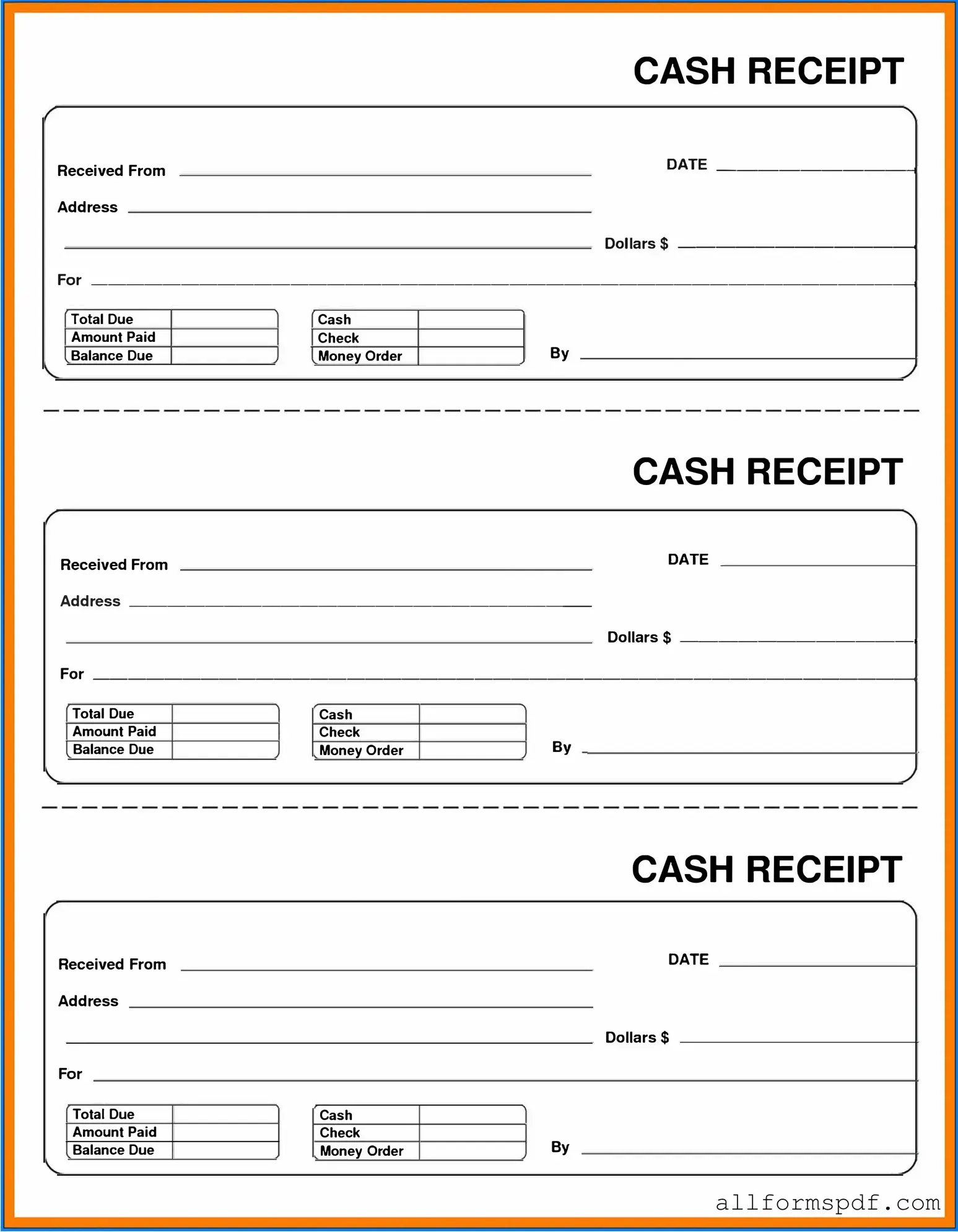Filling out a Cash Receipt form may seem straightforward, but many individuals make common mistakes that can lead to confusion or even financial discrepancies. One frequent error is failing to include the date of the transaction. Without this crucial piece of information, tracking the payment becomes difficult, and it may create issues during audits or reconciliations.
Another common mistake is neglecting to write the amount in both numeric and written form. When only one format is provided, it can lead to misunderstandings or disputes about the actual amount received. Always ensure both formats are included to eliminate any potential confusion.
People often forget to include the name of the payer. This detail is essential for record-keeping and accountability. Without a clear identification of who made the payment, it may be challenging to trace back the transaction in the future.
Additionally, some individuals overlook the importance of specifying the purpose of the payment. Providing a brief description helps clarify the nature of the transaction and can assist in categorizing it correctly in financial records.
Another mistake is not signing the Cash Receipt form. A signature serves as a verification of the transaction and confirms that the cash was indeed received. Skipping this step can lead to disputes or questions about the legitimacy of the receipt.
Many people also forget to include the payment method, such as cash, check, or credit card. This information is vital for accounting purposes and helps in reconciling the cash flow accurately.
Errors in the calculation of the total amount received are also quite common. Double-checking the math can save time and prevent future discrepancies. A simple miscalculation can lead to significant issues down the line.
Some individuals fail to keep a copy of the Cash Receipt form for their records. Retaining a copy is essential for both parties involved in the transaction. It serves as proof of payment and can be referenced in case of any future disputes.
Another mistake is not using the correct format or template for the Cash Receipt form. Using an outdated or incorrect version can lead to confusion and may not meet organizational or legal standards.
Lastly, people sometimes rush through the process, leading to incomplete or illegible information. Taking the time to fill out the form carefully ensures that all necessary details are captured clearly, making it easier for everyone involved.
